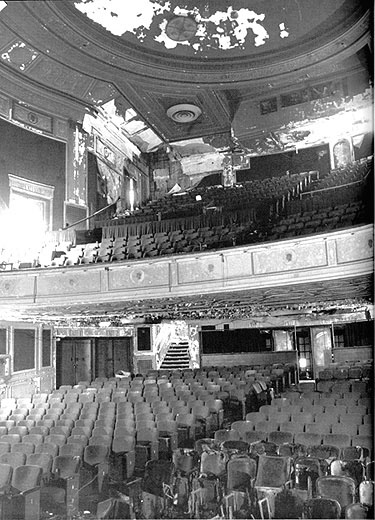
The Biltmore Theatre - 261 West 47th Street
Built 1925
In the mid-1920s the Chanin brothers, engineers and builders, challenged the Shubert empire by constructing six new playhouses in the heart of the theatre district. The 948-seat Biltmore was their second, destined to be the home of many long-run comedies.
The Biltmore opened with a transfer from Cohan's Theatre, the farce Easy Come, Easy Go. Highlights of the theatre's first decade were star turns by Claudette Colbert and James Stewart, but long run success eluded the Biltmore until director george Abbott and the studio warner brothers acquired it in 1936. Five smashes followed over the next fifteen years - the comedies Brother Rat, What A Life, My Sister Eileen, Kiss and Tell, and the drama The Heiress. In 1951 the two owners sold the theatre for $275,000 to developer Irving Maidman, who promptly leased it to CBS for ten years. The Biltmore became Studio No. 62, the network's sixteenth manhattan television facility.
CBS moved out in 1961 and the comedy Take Her, She's Mine opened for a year's run. The Biltmore's next hit arrived in 1963. Neil Simon's Barefoot in the Park, starring Robert Redford, kept Biltmore audiences laughing for over fifteen-hiundred performances. The theater's biggest success, however, came not with a comedy but with a musical that captured the spirit of an entire generation. Hair began life off-Broadway at Joseph Papp's New York Shakespeare Festival, but settled into the Biltmore for a record-breaking four years in 1968.
Though many shows opened at the Biltmore in the seventies and eighties, none of them enjoyed a long run. In 1986, David Cogan, who had purchased the theatre from Maidman for $850,000 in 1958, sold it for $5 million to real estate investor Sam Pfeiffer, who hoped to cash in on the value of the theatre's air rights. But in December of 1987, just a month after the Biltmore's interior was designated a landmark, arsonists set fires on the stage and in the auditorium. Later vandals and scavengers broke in, leaving the theatre in such a deteriorated condition that the city declared it unsafe. Meanwhile, Pfeiffer's three attempts to auction the neglected biltmore failed. Pfeiffer defaulted on his mortgage and the bank took possession of the historical eyesore.
In 1993 James Nederlander and Stewart Lane, partners in the Palace Theatre, bought the Biltmore for $550,000. Four years later, after failing to win wage and staffing concessions from theatre unions, they sold the playhouse to developer Joseph Moinian. The theatre's auditorium is scheduled to be restored and incorporated into a new hotel, but it's future as a legitimate playhouse is very much in doubt.

At left: The interior of the Biltmore Theatre in 1997.
Vacant since the musical review Stardust closed in 1987,
the theatre has been ravaged by fire, vandalism, and neglect.
As of the Summer of 2000 The Biltmore was undergoing renovations,
and was being brought back to life.
Article and photograph copyright Nicholas van Hoogstraten.